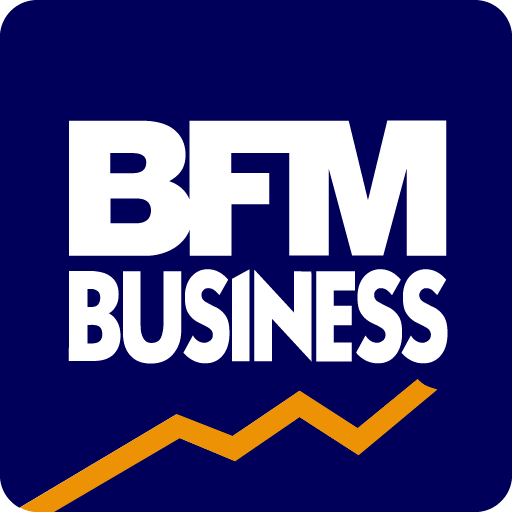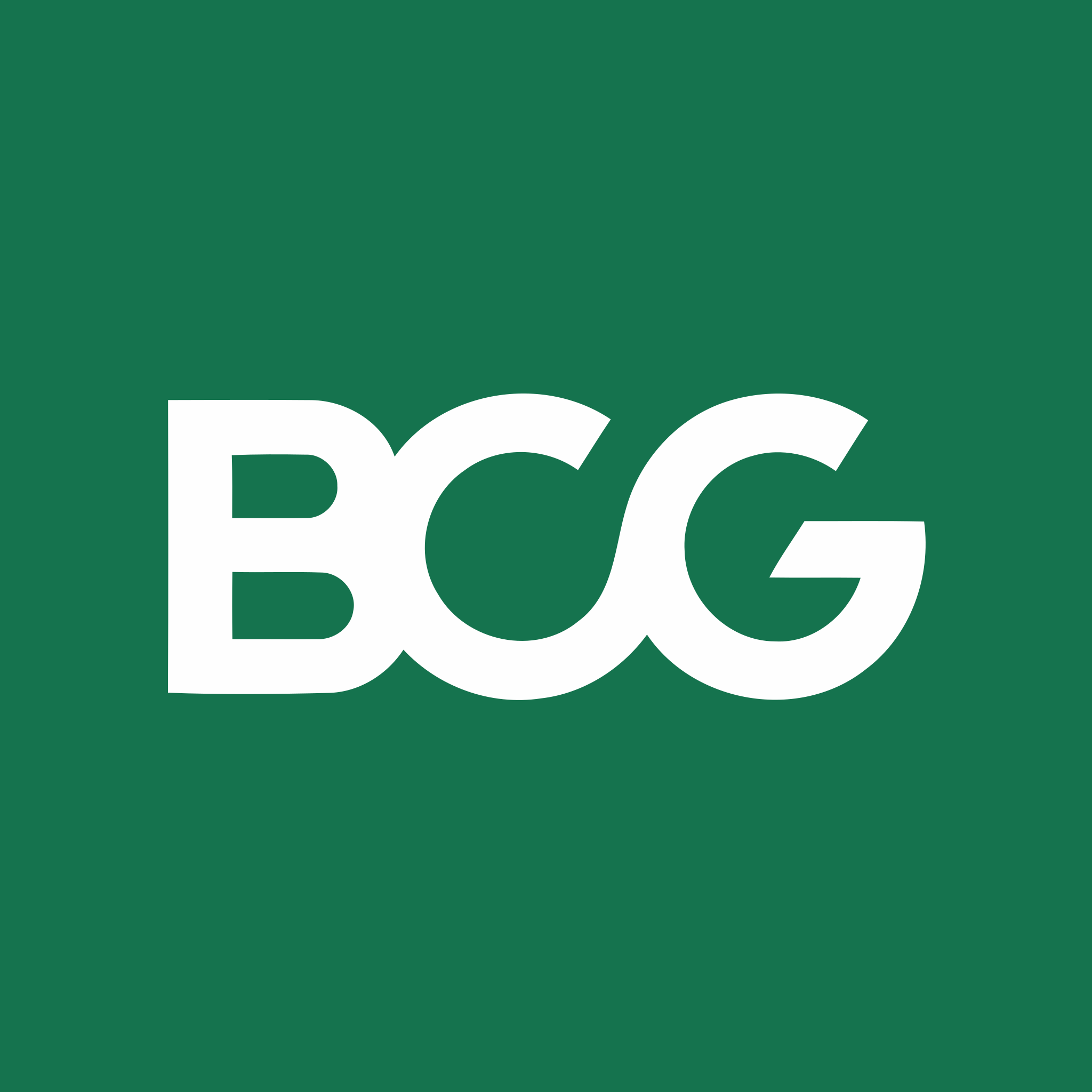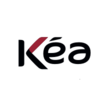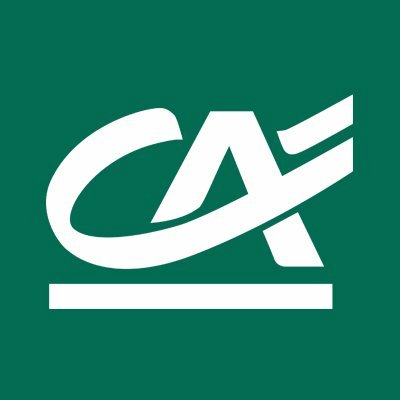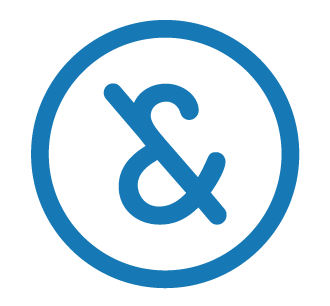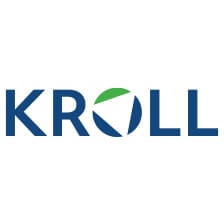Summary of our market study
French handbag market estimated at €7.6 billion
The global handbag market, valued at $75 billion, is expected to grow at an annual rate of 7%.
The French handbag market is expected to grow by 28% in 2022 compared with 2021, and is largely supported by exports.
France, Europe's second-largest producer of handbags after Italy, has a national output of nearly 1.8 billion euros, which has doubled in 10 years.
Production is between 10 and 15 million units. France's reputation for craftsmanship in leather goods is unrivalled.
The luxury leather goods segment dominates the broader leather goods market. In the French handbag market, despite a period of reduced spending in the apparel sector (down around 15% between 2007 and 2018), the handbag segment has maintained its growth.
80% of French consumers are reassessing their consumption habits, and will reduce their clothing budget by 2023.
Women are the core customers for handbags. The number of women owning a single handbag has increased significantly, while the number of those owning three or more has fallen considerably.
Sustainable development concerns are more frequent, but still only affect 27% of consumers.
Players in the French handbag market
- Longchamp is the symbol of French handbag craftsmanship and is known for the iconic Le Pliage, Longchamp line.
- Lancel is another pillar of the French handbag industry, with a history spanning more than a century.
- Louis Vuitton, a name that resonates with luxury, is at the forefront of defining the contours of high-end fashion accessories with instantly recognizable design elements such as the LV monogram.
- Chanel, another icon of the luxury landscape, occupies a venerable position thanks to its classic and avant-garde creations.
- Zara, with its fast fashion approach, appeals to consumers looking for contemporary trends at affordable prices.
- H&M, like Zara, operates in the fast fashion sector
- Guess, known for its youthful, bold aesthetic, bridges the gap between mass retail and luxury.
to understand this market
Detailed content of our market study
 Inforamtion
Inforamtion
- Number of pages : 35 pages
- Format : Digital and PDF versions
- Last update :
 Summary and extracts
Summary and extracts
1 Market overview
1.1 Market definition and presentation
A handbag is a fashion accessory for storing everyday items (wallet, keys, etc.) that can be carried by hand or slung over the shoulder. It is a mass-market product, designed primarily for women, although the men's handbag segment is growing rapidly.The market is made up of a variety of products, distinguished by :
- Range and brand: luxury, high-end, mid-range, entry-level.
- Shape and size: tote, clutch, shoulder bag, bucket bag, etc.
- Material: leather, synthetic, textile, recycled, etc.
The global handbag market was estimated at $73 .32 billion in 2022, and is expected to grow at a CAGR (combined annual growth rate) of 6.8% to 2030. The strong growth of this sector is mainly due to the increase in purchasing power in developing countries such as India, and the growing number of women entering the job market, who demand handbags that meet the demands of professional life.
France is Europe's second-largest producer of handbags, after Italy, which alone accounts for almost 63% of European production. The domestic market is growing rapidly, with its value set to increase by 28.4% in 2022 compared to 2021. Export dynamism and the positive image of French leather goods are the main factors behind this growth. The market is therefore particularly dependent on foreign customers.In addition, new growth drivers are emerging, in particular the digitalization of the sector, the development of the second-hand market, and the growing attention paid by consumers to the eco-responsibility of the products they buy.
Leading French specialist players include Longchamp, Lancaster, Le Tanneur and La Bagagerie. these are complemented by specialized foreign players, notably Italians such as Gucci and Tuscany Leather. Ready-to-wear, accessories and shoe brands also often offer handbags by hand. From specialized multi-brand retailers to Internet sites, the sector boasts a large number of players, although there has been a trend towards concentration over the last few years.
1.2 France, a major international player
The global handbag market was estimated at $**.** billion in ****, and is expected to grow at a CAGR of *.*% to ****.
Global handbag market size projections World, **** - ****, in $ billions Source: ****
Growth in the global market is driven in particular by increasing purchasing power in developing countries. At the same time, more and more women are joining the workforce and holding positions of responsibility (***). As a result, handbags have evolved from simple accessories to essential tools for meeting the diverse demands of contemporary working life. In addition, the growing awareness of luxury bags as a fashion icon, particularly in India, China and Brazil, is driving spending on handbags[***].
alongside established luxury brands, emerging designers and niche players are entering the market, introducing distinctive designs and know-how. These brands appeal to consumers seeking exclusivity and individuality, enriching the diversity of the luxury handbag industry.
France is Europe's second-largest producer of handbags, after Italy, which alone accounts for **% of European production. on a global scale, China and Italy are the two main suppliers of handbags.
Ranking of European handbag producers by volume Europe, ****, as % of total Source: ****
In ****,the leather handbag segment dominated the market with a share of **.**%driven by growing consumer interest in ...
1.3 A fast-growing national market
Sales are calculated using the following formula: value of exports + value of production sold - value of imports. The data used will be detailed in sections *.*, on international trade, and *.*, on handbag production.
In ****, the French handbag market was estimated at *.* billion euros, an increase of around **.*% on ****. The national market is therefore currently growing strongly, but has been enjoying accelerating growth for over a decade. In fact, it has doubled in size in four years and quadrupled in **.
French handbag market size France, **** - ****, € billion Source: ****
This sector was only marginally impacted by the health crisis. Although growth in **** vs. **** was *.*% vs. **.*% in **** vs. ****, it picked up again in **** with a value of **.*%.
This strong growth is mainly due to dynamic export sales of handbags, thanks to the international reputation enjoyed by French handbag manufacturers. France is Europe's second-largest producer of handbags, after Italy (***). The leading French brands in this sector are Longchamp, Lancel, Louis Vuitton and Chanel, i.e. the major French luxury brands.
However, the players with the highest sales volumes in France are ready-to-wear brands, mostly foreign, such as Zara, H&M and Guess. They manufacture their products abroad for production cost reasons and sell them in ...
1.4 International trade
In order to find out France's international trade figures in the handbag sector, we'll need the following sector identification codes. In the Eurostat Prodcom database, trade in handbags is recorded under the code :
********: Handbags of leather, composition leather, patent leather, plastics, textiles or other materials (***)
In the French Customs database, trade in handbags is recorded under the following CN* codes:
******** : Handbags, whether or not with shoulder strap, including those without handle, with outer surface of leather, of composition leather or of patent leather ******** : Handbags, whether or not with shoulder strap, including those without handle, with outer surface in plastic sheeting ******** : Handbags, whether or not with shoulder strap, including those without handle, with outer surface of textile materials ******** : Handbags, whether or not with shoulder strap, including those without handle, with outer surface of vulcanized fiber or paperboard, or covered wholly or mainly with the same materials or with paper
Finally, on the UN Comtrade platform, trade in handbags is recorded under the following codes:
******: Handbags, whether or not with shoulder strap, including those without handle, with outer surface of leather, of composition leather or of patent leather ******: Handbags, whether or not with shoulder strap, including those without handle, with ...
2 Demand analysis
2.1 Lower spending in the apparel sector
Today, handbags are still predominantly popular with women, who are their main customers. Although more and more handbag models for men are being developed every year with the emergence of "genderless" fashion[***], the popularity of these items is struggling to get off the red carpets and out of the fashion world. We will therefore focus on women's behavior in this section.
The handbag market is part of the wider clothing market, which has been characterized for several years by a decline in French consumption. Indeed, according to the Institut Français de la Mode, between **** and ****, the clothing market lost **% of its value[***]. This decline is due in particular to the rise of second-hand shopping and the rethinking of fast fashion.
Households are spending less and less in the clothing and accessories sector, which includes the handbag segment. This was already evident in the handbag sector in ****.
Women's annual handbag budget France, ****, in millions of women Source: ****
As a result, many segments are experiencing significant customer losses, with the exception of handbags priced between €*** and €***, which are experiencing a smaller decline.
The downward trend in the clothing budget continued after ****. Indeed, in ****, this budget was €*** per person per year, down *.*% on ...
2.2 Demand drivers: national image and sales seasonality
A favorable national reputation:
French products enjoy a positive image at home, of course, but also abroad. The country is renowned for its expertise in the production of leather goods, particularly luxury goods.
The international survey illustrated below shows how respondents of different nationalities perceive French handbag manufacture. France is in second place, with Italy in first place. The United States completes the podium.
Countries considered the best for handbag manufacturing World, ****, in Source: ****
French brands can therefore capitalize on this image to win over international customers, something they are already doing well, as evidenced by the good export results given in *.*.
Seasonality of sales:
The graph below shows the proportion of searches for the word "sac à main" in France over the last five years, in relation to the time when the rate of use of this keyword was highest (***). A value of ** means that the keyword was used less often in the region concerned, and a value of zero means that there is insufficient data for this keyword.
Frequency of searches for the term "sac à main" on Google France, **-**** - **-****, in frequency Source: ****
The handbag market is characterized by a strong seasonality of sales, with a visible increase ...
2.3 Demand trends: second-hand and eco-responsibility
Second-hand:
The global second-hand fashion market has an estimated value of $*** billion in ****. According to forecasts, this market is set to grow significantly over the next five years, with a projected value of $*** billion by ****, almost double its current value[***]. The French second-hand fashion industry has seen notable growth, rising from * billion euros in **** to more than * billion euros in ****. Clothing contributes * billion euros to this total. Faced with competition from platforms such as Le Bon Coin and Vinted, industry players are reorganizing: according to a survey by IFM (***), **% of companies surveyed have already developed a second-hand offer, and **% plan to do so in the coming year.
This second-hand development applies particularly to the handbag market, which is one of the most widely resold and purchased second-hand items. According to the survey below, the handbag is the most purchased second-hand luxury item in France.
Types of luxury goods most purchased second-hand France, ****, in Source: ****
This boom in the second-hand market is also a factor in the growing preference for quality items. On the one hand, the second-hand market enables them to buy quality items at an affordable price, and on the other, it encourages many consumers to buy more expensive products, ...
2.4 France's favorite brands
To find out what the French think of the sector's biggest brands, we're going to use an Opinionway survey on the brands preferred by the French. conducted in March **** with a representative sample of *,*** French Internet users aged ** and over.
Rate of appreciation of major handbag brands France, ****, in Source: ****
Ready-to-wear brands are the most popular, although Hermès comes second. This is undoubtedly due to the prices charged, as H&M reaches a much wider audience than Louis Vuitton. Women are the most popular handbag brands.
Appreciation of major handbag brands by gender France, ****, in Source: ****
Louis Vuitton is the only brand that appeals more to men than to women. We can also observe that the appreciation of different age groups varies greatly depending on the brand.
Appreciation of major handbag brands by age group France, ****, in Source: ****
Ready-to-wear brands H&M and Zara appeal much more to **-** year-olds than to older age groups. On the other hand, C&A, which is also a ready-to-wear brand, fails to appeal to younger customers, with ** - ** year-olds being the age group with the lowest approval rating. This is undoubtedly due to the fact that this brand is less present in France ...
3 Market structure
3.1 Handbag production
Source: ****
Most handbags sold in France are made by ready-to-wear brands, often foreign, who manufacture their bags abroad at much lower costs than those available in France. The handbags are then sold in their stores among their many other articles, or online via their websites.
However, some players continue to produce in France: the specialized leather goods groups, which are generally large French luxury houses such as LVMH, Hermès or Longchamp. Their products are manufactured by subcontractors or the subsidiary's own workshops, and then sold in their own stores or in specialized multi-brand stores. Online sales are also gaining in popularity, with specialized platforms such as Gandy Maroquinier and La Boutique Maroquinerie.
3.2 Domestic production on the rise
In ****, French handbag production reached almost *.*** billion euros. The value of production has moreover doubled in ** years, testifying to the strong dynamism of French handbag manufacturing. Although production fell back slightly in ****, this was due to the health crisis.
French handbag production value France, ****-****, € billion Source: ****
French production volume has also been growing strongly since the end of the health crisis that dealt it a major blow. The volume produced in **** was not reached again until ****, with **.*** million units produced.
French handbag production volume France, ****-****, in millions of units Source: ****
The price increase (***) is clearly visible when comparing the two graphs above. Indeed, the volumes produced in **** and **** were equivalent, but the value in **** is *** million euros higher.moreover, France is particularly renowned for its expertise in leather goods, and especially luxury leather goods, with many French groups maintaining French manufacturing. conversely, handbags manufactured by ready-to-wear brands such as H&M or C&A, for example, are mostly made abroad, particularly in Asian countries.
Average price of a handbag France, ****-****, in € Source: ****
The average price of a handbag produced in France fell between **** and ****. However, the trend reversed from **** until ****. The price then fell slightly, reaching €***.** in ****, a ...
3.3 The main players in the industry
In the handbag market:
The brands with the highest penetration rates are ready-to-wear brands such as H&M and Zara, as well as Longchamp and Lancaster. According to a Kantar study, these are the brands that attract the most consumers, followed by Guess, Le Tanneur and Lancel.
Ranking of handbag brands by number of consumers France, ****, in millions of people Source: ****
In the leather goods market:
The handbag segment accounted for **.*% of the leather goods industry in ****, so we'll now look at the structure of this sector.
Breakdown of French leather goods production France, ****, in % of total Source: ****
Sector overview:
Leather goods refers to the industry of fine leathers for the manufacture or upholstering of high-end articles. This sector includes numerous smallcompanies, many of which work as subcontractors for major French luxury groups such as LVMH or Hermès. According to the Conseil National du Cuir, there are *,*** employees working in *** companies.
Three types of players are involved in this sector: manufacturers, integrated groups (***) and distributors. The table below details the various activities recorded under the heading of travel goods, leather goods and saddlery production.
Source: ****
Regional distribution:
In ****, there were *** production units in the leather goods sector, figures that have ...
3.4 A fragmented market that is gradually becoming more concentrated
In France, the handbag market is highly fragmented, with many different players. As we explained earlier, backpack manufacturers can be leather goods specialists, companies making bags of all kinds, including handbags, or ready-to-wear brands such as Zara or H&M. URSSAF lists the players in the handbag sector within the travel goods, leather goods and saddlery sector. This broader overview will give us trends in the handbag segment.
Number of establishments in the travel goods, leather goods and saddlery production sector France, **** - ****, in units Source: ****
In France, the number of producers in the sector has been rising steadily since ****, as has the number of their employees.
Number of employees in the travel goods, leather goods and saddlery production sector France, **** - ****, in thousands Source: ****
By contrast, leather goods and travel goods retailing has been losing establishments since ****.
Number of establishments in leather goods and travel goods retailing France, **** - ****, in units Source: ****
While the number of employees remains fairly stable, there will be a drop in **** and **** due to the health crisis.
Number of employees in the leather goods and travel goods retail sector France, **** - ****, in units Source: ****
This decline in the number of establishments is due to the ...
3.5 Handbag distribution
Handbags are sold through several distribution channels, the main ones being :
stores specializing in the sale of handbags ; clothing and accessories stores (***) ; department stores (***); food superstores; the Internet (***).
Specialized stores are often manufacturers specializing in leather goods, who mainly offer handbags for sale, but also wallets and travel items. Some brands, such as La Bagagerie or Le Tanneur, offer different ranges of handbags, while others, such as Lancaster, Lancel or Louis Vuitton, specialize in luxury leather goods.
Clothing, accessory and shoe stores can be of different types. In the handbag market, luxury brands with handbag collections play a major role. Several luxury brands, such as Longchamp, Michael Kors and Louis Vuitton, also offer ready-to-wear items and other accessories, but are particularly renowned for their leather goods collections, including handbags. Ready-to-wear brands such as H&M and Zara also sell handbags, as do shoe and accessory stores such as Parfois and Eram.
Second-hand is becoming increasingly popular in the handbag sector, with the main players in the clothing sector being : Vestiaire Collective, Vinted, Instant Luxe, Vide Dressing and Depop.
4 Offer analysis
4.1 Extremely diversified products
The handbag market can be divided into several segments, depending on the range, model or material used.
The different product ranges are as follows:
Luxury handbags: these are handbags made from high-quality materials (***) and using advanced processes. Luxury handbags range from €*** to several thousand euros. The world's most expensive handbag, for example, is the "**** Nights Diamond Bag" put up for sale by Mouawad and estimated at over $*.* million[***]. High-end handbags: this product range lies between luxury and mid-range handbags. These bags generally use good-quality components, but often have a lesser brand image than luxury giants such as LVMH. The prices of these bags remain mostly high (***). High-end brands include Vanessa Bruno and Guess. Mid-range bags: in leather or canvas, these bags are well-worked and have a more aesthetic design than entry-level bags. Entry-level bags: these are usually made from lower-quality materials (***) and have a simpler, more practical design.
The main models on the market include :
Tote bag: trapezoidal in shape, this bag provides ample storage capacity. Its wide handles allow it to be carried on the shoulder or arm. Lady bag: this bag has two handles for easy transport. It can be carried on the shoulder, by hand or on the ...
4.2 Handbag prices
As mentioned in the previous section, handbag prices vary according to many factors, including brand, product type and material. However, the graph below highlights a general rise in prices for travel goods and other goods for carrying personal belongings, which include handbags.
In ** years, between **** and ****, prices in this product category have risen by almost **%.
Consumer price index for travel goods and other goods for transporting personal effects (***) France, ****-****, base *** in **** Source: ****
The Covid-** epidemic has reinforced this trend, particularly for luxury bags. Chanel, for example, announced price increases for some of its products in France, due to the higher cost of raw materials during the pandemic. These price adjustments range from increases of * to **% and concern Chanel's iconic handbags, the **.** and *.**, as well as the Boy, Gabrielle, Chanel ** and certain small leather goods[***].
The trend is still towards higher prices in a context of inflation and rising raw material and transport costs.
4.3 Model examples
The table below provides a sample of the models that have marked the history of the market.
5 Regulations
5. Regulatory framework
In-store sales:
In-store sales are subject to certain rules summarized by Legalplace:
safety and accessibility standards[***] ; compulsory displays for employees; indication of prices inside and outside the store in euros and including VAT; compulsory contribution to SACEM if music is played on the premises.
Clothing labels:
Clothing labels must include :
Composition label: this is compulsory and must be affixed to the product, legible and written in French. Care label: this is optional, but helps to avoid professional liability in the event of care-related problems. Size designation: this can be numerical or alphabetical[***].
Made in France and labels:
The " Made in France " label is obtained by complying with the rules of non-preferential origin applied to imports by customs services. In short, the product takes its origin from the country where it underwent its last substantial transformation[***].
Made in France labels guarantee greater visibility on the origin of products. For example, the France Terre Textile label guarantees that at least **% of the manufacturing stages have been carried out in France[***].
The Made in responsable website describes several textile labels and their limitations. Among the best known are OEKO-TEX, which guarantees textiles free of toxic products for the body and the environment, GOTS, which ...
6 Positioning the players
6. Segmentation
- LVMH Groupe
- Lancel (Piquadro)
- Le Tanneur
- Vanessa Bruno
- Parfois - Modessa france
- Longchamp
- Michael Kors
- Lancaster Maroquinier
- Lacoste Groupe
- Vinted
- Anakiara
- Louis Vuitton Malletier
- Polène
- Couleur Sedona
- Goyard (Algo Groupe)
- Heimat Atlantica
- Léo et Violette
- Mansur Gavriel
- Nat & Nin
- PÖ&ME
- Shrimps
- Sonia Rykiel
- Staud
- Tammy & Benjamin
- Valencroix
- Yuzefi
- Zoatl
- Cabaia Valtex
- Hermès International
- H&M Groupe
- Leboncoin (Adevinta Group)
- Vestiaire Collective
- Guess
- Inditex groupe (Zara)
- Jacquemus
- Camille Fournet Maroquinerie
- Jérôme Dreyfuss
- Swildens
- Mellow Yellow - Groupe Eram
All our studies are available online in PDF format
Take a look at an example of our research on another market!
 Choosing this study means :
Choosing this study means :
Access to more than 35 hours of work
Our studies are the result of over 35 hours of research and analysis. Using our studies allows you to devote more time and added value to your projects.
Benefit from 6 years' experience and over 1,500 industry reports already produced
Our expertise enables us to produce comprehensive studies in all sectors, including niche and emerging markets.
Our know-how and methodology enable us to produce reports that offer unique value for money.
Access to several thousand articles and paid-for data
Businesscoot has access to all the paid economic press as well as exclusive databases to carry out its market research (over 30,000 articles and private sources).
To enhance our research, our analysts also use web indicators (semrush, trends, etc.) to identify market trends and company strategies. (Consult our paying sources)
Guaranteed support after your purchase
A team dedicated to after-sales service, to guarantee you a high level of satisfaction. +44 238 097 0676
A digital format designed for our users
Not only do you have access to a PDF, but also to a digital version designed for our customers. This version gives you access to sources, data in Excel format and graphics. The content of the study can therefore be easily retrieved and adapted for your specific needs.
 Our offers :
Our offers :
the handbag market | France
- What are the figures on the size and growth of the market?
- What is driving the growth of the market and its evolution?
- What is the positioning of companies in the value chain?
- Data from several dozen databases
Pack 5 études (-25%) France
- 5 études au prix de 74 €HT par étude à choisir parmi nos 1200 titres sur le catalogue
- Conservez -25% sur les études supplémentaires achetées
- Choisissez le remboursement des crédits non consommés au terme des 12 mois (durée du pack)
Consultez notre catalogue d’études sectorielles











